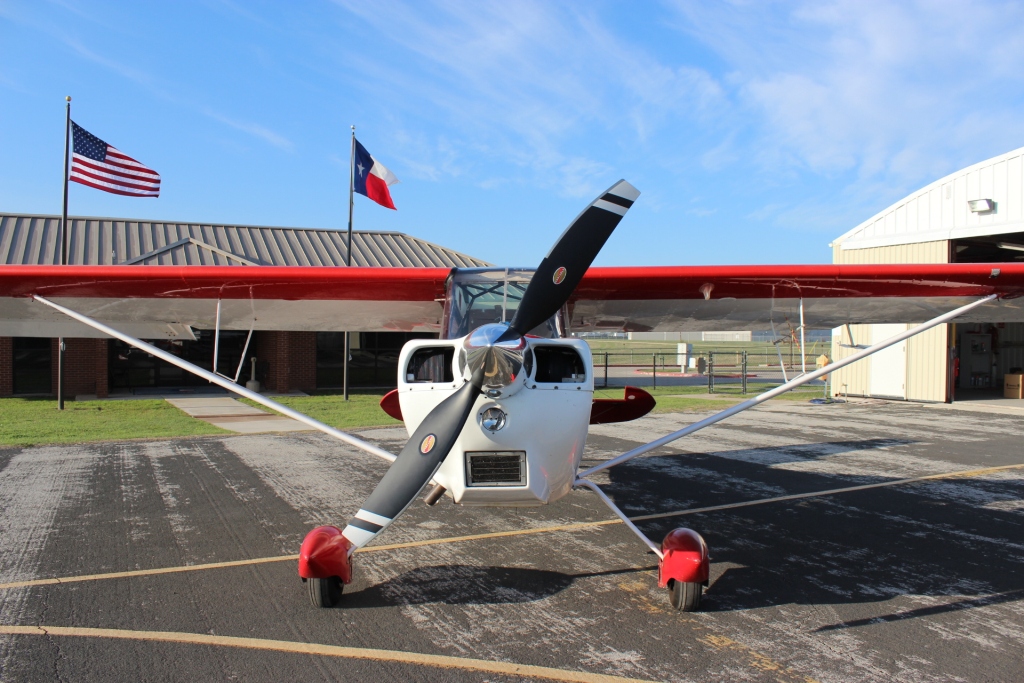
As winter melts into spring, many general aviation pilots are eager to get back into the skies. It can be tempting to “kick the tires and light the fires” as soon as it’s warm outside, but cutting corners is never a good idea. After a period of inactivity, your airplane will need special care and attention to ensure a safe, smooth spring flying season.
Give your airplane a pre-season checkup with these tips:
Start by reviewing your airplane’s maintenance logs and repair records. Is your aircraft due for routine maintenance services, such as an oil and filter change? Now is the time to cross these maintenance tasks off your list before the busy flying season begins.
Even if you were able to store your airplane in a hangar over the winter, it’s smart to inspect for external damage before flight. Take a full walk around the airplane, looking for issues like cracks, dents, and corrosion. Inspect exterior components like the wing flaps, fins, landing gear, and propeller assembly for any loose parts or obvious structural damage.
Then, do a close-up exam with an inspection mirror and flashlight. Thoroughly check all systems for leaks, corrosion, and any other mechanical issues. Winter’s fluctuating temperatures can cause cracks and corrosion in seals and gaskets, so you’ll want to inspect each one carefully.
Be sure to inspect the fuel system for water or foreign matter. Clean and replace the fuel filter and check the fuel tanks for moisture, which can cause corrosion. Flushing the fuel system after a long period of inactivity will help to protect your engine from damage.
As you inspect your airplane this spring, check the propeller, engine cowl, intakes, ports, vents, and other areas for evidence of wildlife activity. Feathers, droppings, chewed wiring, and nesting materials are all signs that you may have an unwelcome passenger. Rodents, birds, and insects can make themselves at home in the smallest nooks and crannies of an airplane—even in closed hangar spaces!
Just like automotive tires, airplane tires tend to lose pressure with temperature changes. Test the pressure levels and return to the correct PSI if necessary. Inspect each tire for tread wear, cuts, cracks, foreign objects, and bald spots. While you’re at it, inspect the brake system and make sure the brake pads are in good condition.
Remove the battery to inspect and test it. In general, airplane batteries last between three to six years, so consider whether it’s time for a replacement.
Finally, give your airplane a thorough spring cleaning inside and out. Begin by washing the exterior to clean off any dust and dirt that accumulated over the winter. When you get to the propeller blades, use a soft cloth and a simple solution of dish soap and water. Wipe each blade in a downward position to prevent water from running back into the hub. To polish an aluminum propeller spinner, use an automotive-type aluminum polish and a buffing pad.
Once you’ve finished with the outside, take everything out of the cockpit — trash, expired charts, pens, flashlights, rags, batteries, etc. Vacuum the inside, then wipe the surfaces with an approved cleaner. Empty and organize your flight bag. This is a great time to update your emergency survival kit and first aid kit, too.
It’s well worth the extra time and effort to get your airplane into tip-top shape before the spring and summer flying season.
Do you have any questions about proper care and maintenance for Hartzell propellers? Contact us today. We’re always happy to answer your questions!